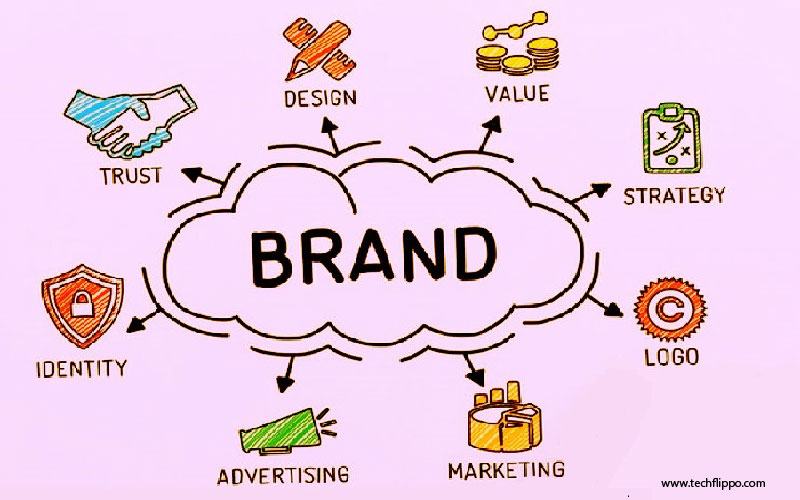How to Create a Memorable Brand Identity
Every successful business has something that sets it apart. That unique character is known as brand identity. It’s not just a logo or a catchy tagline; it’s the essence of your business, shaped by how you want to be perceived in the marketplace. In today’s competitive landscape, creating a memorable brand identity is essential for standing out and making an impact.
Have you ever encountered a brand that instantly resonated with you? Whether through their visuals, messaging, or overall vibe, these brands stick in our minds for good reason. They communicate values and evoke emotions that connect deeply with their audience. So how do we establish this kind of powerful presence?
In this guide, we’ll navigate the ins and outs of building an unforgettable brand identity from scratch. We’ll explore what it means to have strong branding and reveal key elements that contribute to its success. Get ready to dive into strategies that resonate with your target audience while crafting an image that’s uniquely yours!

What is a Brand Identity?
Brand identity is the collection of elements that defines how a brand is perceived by its audience. It’s more than just a logo or color scheme; it’s the overall personality and essence of your business.
At its core, brand identity encompasses visual aspects like typography, imagery, and design style. These components work together to create a cohesive look that represents your values.
However, it doesn’t stop there. Brand identity also includes tone of voice and messaging. How you communicate with your customers shapes their perception even further.
This combination helps distinguish you from competitors while building trust with consumers. A strong brand identity tells a story that resonates emotionally, inviting people to engage with what you offer on a deeper level.
The Importance of Having a Strong Brand Identity
A strong brand identity sets the foundation for your business. It distinguishes you in a crowded market, making it easier for customers to recognize and remember you.
When consumers can identify with your brand, they are more likely to choose you over competitors. This connection fosters trust and loyalty.
Moreover, a well-defined brand identity communicates your values and mission. It’s not just about aesthetics; it’s about conveying what you stand for as a company.
With consistent branding across all platforms, you create a cohesive experience that resonates with audiences. The right identity can evoke emotions and inspire action, turning casual buyers into passionate advocates.
In today’s digital world, where attention spans are short, having an impactful brand is crucial. You want to be memorable—the kind of brand people talk about long after their first encounter.
Key Elements of a Memorable Brand Identity
A memorable brand identity hinges on several key elements that work together seamlessly. First, your logo is a visual anchor. It should be distinctive and easily recognizable, reflecting the essence of your brand.
Color palette plays a crucial role too. Colors evoke emotions and set the tone for your messaging. Choose a combination that resonates with your target audience while aligning with your brand values.
Typography adds another layer to your identity. The fonts you select should reflect personality—be it modern, classic, or playful.
Imagery is equally important; visuals tell stories without words. Consistent use of imagery can create familiarity and trust among consumers.
Don’t overlook the tagline or slogan. A catchy phrase can encapsulate what you stand for in just a few words, making it stick in people’s minds long after they encounter it.
Understanding Your Target Audience
Understanding your target audience is crucial for creating a memorable brand identity. It’s not just about demographics; it involves delving deeper into their interests, values, and pain points.
Start by conducting thorough market research. Surveys, interviews, and social media insights can reveal what motivates your audience. What do they enjoy? What challenges do they face in daily life?
Create buyer personas to visualize different segments of your audience. This helps you tailor messages that resonate with them emotionally.
Engage directly through platforms where they spend time. Listen actively to their feedback and adapt accordingly.
When you understand who you’re speaking to, every element of your branding becomes more intentional. The right message delivered at the right time builds trust and fosters connection with potential customers.
Creating a Unique Visual Identity
Creating a unique visual identity is essential for making your brand stand out. It’s about crafting an image that resonates with your audience and reflects your core values.
Start by choosing a distinctive color palette. Colors evoke emotions and can influence perceptions of your brand. Think carefully about the message you want to convey through each shade.
Next, consider typography. The fonts you select should align with your brand’s personality—whether it’s fun, sophisticated, or modern. Consistency in font usage across all platforms reinforces recognition.
Incorporate graphics and imagery that tell your story visually. Unique logos or illustrations can become synonymous with your brand over time.
Ensure all visual elements work together harmoniously. A cohesive look across various mediums enhances memorability and strengthens connections with customers.

Crafting Your Brand’s Voice and Messaging
Your brand’s voice is the personality that comes through in every piece of communication. It shapes how your audience perceives you and can create an emotional bond.
Start by defining your core values. What does your brand stand for? This foundation guides tone, style, and messaging.
Next, consider your target audience’s preferences. Are they looking for professionalism or a casual vibe? Tailoring your voice to resonate with them builds trust.
Keep consistency in mind across all platforms—social media posts, website content, and emails should reflect the same tone.
Experimentation helps too; don’t be afraid to tweak language or approach as needed. Listen to feedback from customers to refine messaging further.
Remember, authenticity shines through when you speak genuinely about what matters most to you and your audience!
Consistency is Key: Maintaining Your Brand Identity
Consistency is essential for a strong brand identity. It builds trust and recognition among your audience. When customers see the same colors, fonts, and messaging across various platforms, they start to associate these elements with your brand.
Every touchpoint matters. Whether it’s your website, social media, or packaging, maintaining uniformity in design reinforces who you are as a brand. This cohesion helps eliminate confusion and creates a more professional image.
Regularly review all materials to ensure they align with your established guidelines. Small details can make a significant difference in how people perceive you.
Engaging employees in this process also strengthens consistency. When everyone understands the brand’s values and voice, it becomes easier to maintain that identity across customer interactions.
Remember that consistency does not mean stagnation. As trends evolve, adapt thoughtfully while staying true to your core identity for lasting impact.
Building Brand Loyalty Through Effective Branding
Building brand loyalty goes beyond just selling a product. It’s about creating an emotional connection with your audience. When customers feel aligned with your values and mission, they become advocates for your brand.
Effective branding plays a crucial role here. A strong identity resonates deeply, evoking trust and familiarity. Think of brands that inspire loyalty; their messaging is consistent and authentic. This makes consumers feel part of something bigger.
Engage consistently across all platforms to nurture this relationship. Share stories that reflect your brand’s ethos, invite feedback, and create community-driven experiences.
Remember that loyal customers are more likely to return—and recommend you to others. Focus on exceeding expectations in every touchpoint from service interactions to product quality. This commitment not only strengthens bonds but transforms casual buyers into lifelong fans who stand by you through thick and thin.
Case Studies: Successful Brands with Strong Identities
Apple is a prime example of brand identity done right. Their sleek design and minimalist aesthetic reinforce their message of innovation and simplicity. The iconic apple logo is instantly recognizable, embodying the essence of the brand.
Nike stands out with its powerful “Just Do It” slogan. This simple phrase resonates deeply with athletes and fitness enthusiasts alike. The swoosh symbol further solidifies their commitment to performance and excellence.
Coca-Cola offers another compelling case study. The classic red color combined with cursive lettering evokes feelings of nostalgia and happiness. Their consistent branding across various platforms creates a sense of familiarity that consumers trust.
Another noteworthy mention is Airbnb, which emphasizes community through its branding efforts. Their visual identity reflects inclusivity, making travelers feel at home anywhere in the world.
These examples demonstrate how strong brand identities can leave lasting impressions on consumers while fostering loyalty over time.
Conclusion
Creating a memorable brand identity is essential for any business aiming to stand out in today’s competitive landscape. It starts with understanding what brand identity truly means. This involves not just the visual elements, but also the voice and messaging that resonate with your audience.
Having a strong brand identity builds trust and recognition among consumers. It differentiates you from competitors while fostering loyalty over time. By focusing on key elements like logos, color schemes, typography, and messaging strategies, businesses can craft identities that leave lasting impressions.
Understanding your target audience is foundational to shaping this identity effectively. Knowing who they are allows brands to tailor their visual styles and communications appropriately. A unique visual identity captures attention; it makes customers remember you easily amidst noise.
Equally important is crafting your brand’s voice—how you communicate can set the tone for customer interactions and experiences. Consistency across all platforms enhances credibility as well as familiarity.
Successful branding doesn’t stop at creation; it evolves by maintaining those established elements consistently over time. Brands need to engage continually with their audiences to build lasting relationships based on loyalty and mutual respect.
Many case studies highlight how successful brands have utilized these principles effectively—from Apple’s sleek minimalism reflecting innovation to Nike’s powerful storytelling promoting motivation through athleticism.
Investing time in creating a memorable brand identity pays off significantly in terms of visibility, customer loyalty, and overall success in the marketplace. Embrace this journey fully; it has potential far beyond mere marketing strategy—it shapes perceptions and influences emotions about your business long-term.